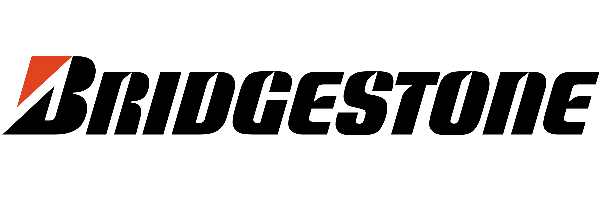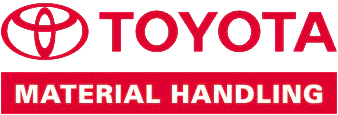WHS or Work Health and Safety, refers to protecting the health, safety, and welfare of workers and other people in WA workplaces.
Work Health and Safety (WHS) has corresponding Acts in each Australian state and territory, as well as the Federal Work and Health Safety Act, 2011, which is relevant across the country.
The Western Australian Government only just recently integrated a state-wide Act that encompasses harmonised laws to maintain worker safety.
But how can WA businesses comply with this and what changes need to be made within a business?
Skytrust is a safety software company whose programs and applications have been integrated into hundreds of businesses, from large manufacturers to local Government and international brands.
In this blog, Skytrust has outlined some principles of the new Western Australian WHS Act, and explains how you can implement these principles in your workplace.
What is the latest WHS Act in WA?
In November 2020, the Work Health and Safety Act, 2020 was passed in Western Australian Parliament.
The WHS Act and accompanying regulations came into effect in 2022.
The WHS Act provides a framework to protect the health, safety and welfare of workers in WA workplaces and of other people who might be affected by work. This includes contractors, sub-contractors and volunteers.
All Western Australian workplaces now come under this single Act.
The WHS Act covers all workplaces within the natural jurisdiction of Western Australia, including mines, petroleum and geothermal energy operations.
Commonwealth Government workers and some self-insured licensees are covered by Comcare under the Work Health and Safety Act 2011 (Cth).
Some key features of the WHS Act
- The primary duty holder is the ‘Person Conducting a Business or Undertaking’ (PCBU) which is intended to capture a broader range of contemporary workplace relationships.
- Positive due diligence obligations on ‘officers’ to ensure compliance.
- The new offence of industrial manslaughter, which provides substantial penalties for PCBUs where a failure to comply with a WHS duty causes the death of an individual, in circumstances where the PCBU knew the conduct could cause death or serious harm.
- Prohibition on insurance – the voiding of insurance coverage for WHS penalties, and imposition of penalties for providing or purchasing this insurance.
- The introduction of WHS undertakings, which are enforceable, as an alternative to prosecution.
- Reporting requirements for ‘notifiable incidents’ such as the serious illness, injury or death of persons and dangerous incidents arising out of the conduct of a business or undertaking.
- Provision for consultation on WHS matters, participation and representation.
- Provision for the resolution of WHS issues.
What is the most significant change in the new legislation?
The WHS Act includes a penalty provision for industrial manslaughter (s. 30A).
Duties of care in the previous OSH Act were predominantly based on the employer-employee relationship. In the WHS Act, there are now more diverse relationships that do not readily fall into traditional concepts of employment.
Under the WHS Act, industrial manslaughter is a criminal offence with no limitation period.
Due to the seriousness of the offence, it may only be prosecuted by the Director of Public Prosecutions.
Only persons conducting a business or undertaking (PCBUs) and their officers can be charged with industrial manslaughter.
Which part of the model WHS Act outlines the requirements for consultation under the Act?
Matters relating to consultation can be found in Part 5 of Work Health and Safety Act, 2020.
The Act introduces obligations on duty holders to consult, cooperate and coordinate with other duty holders if more than one person has a duty in relation to the same matter.
A failure to comply with this duty carries a maximum fine of $25,000 for individuals and $115,000 for body corporates.
What this new duty means for PCBUs is that they now need to reassess their process to contractor management practices to ensure all PCBUs where activities interact with one another, there is collaborative consideration of the hazards arising from that interaction and appropriate control measures are put in place to reduce risks.
The legislation also states that every industry needs to have a WHS system in place.
You can look at the Act in its entirety here.
What is a WHS system?
A Work Health and Safety system is one that can monitor risks, accidents, and other health and safety measures in the workplace to ensure that compliance is being met and workers are safe at work.
The most efficient, most reliable, most universal safety system to use is cloud-based safety software.
Online safety software creates an infinite amount of possibilities for those that are liable under the new Act and for all the workers who are susceptible to risks.
Cloud-based software provides a range of applications and integrations – many of which help WA businesses remain compliant under the new Work Health and Safety Act, 2020.
Make incident reporting easy
With a WHS Management System, workplaces can be monitored and informed through updates and notifications.
When an incident occurs in the workplace, you can keep a record of injuries through a dedicated incident reporting module.
Tailored reporting features via the real-time dashboard or through the reporting module always keeps you on top of what is happening in your business and manages your performance to ensure compliance is being met.
You can also decrease the chance of any injuries occurring when you identify your risks and put appropriate systems in place to mitigate them.
Uncover trends when you analyse graphs and data
Trends are found through OHS software’s outstanding algorithms which can collate data that has been collected by various team members over a period of time.
Discover where there are gaps in your workplace, like common sources of injuries or a popular time and place for risks.
Streamline training and certification
Employers and employees can also upload and track when training and certificates will expire and when licensing needs renewing.
Provide inductions to staff and contractors
WHS induction modules ensure that workers and contractors can be inducted before they even come to the workplace.
You can also conduct contractor performance evaluations by monitoring contractor’s work efficiency and their behaviour.
What’s the most trusted WHS software to use in Australia?
Skytrust is used by many industries across the globe!
Skytrust is an Australian-based safety software that has been introduced to hundreds of various workplaces.
If you want to learn more about how our software works, we invite you to get in touch with us today to organise your FREE three-month trial. This trial enompasses all our intergrations, including workplace health and safety auditing, risk management, and more.
Discover the Skytrust difference and improve workplace safety and compliance today.
Alternatively, call us on (08) 8361 7100 or fill out this form and we’ll be in touch.






